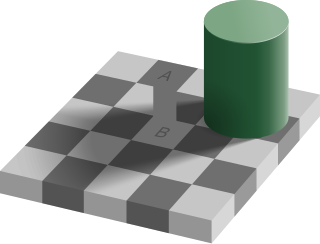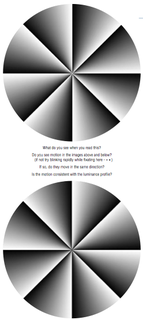
The philosophy of perception is concerned with the nature of perceptual experience and the status of perceptual data, in particular how they relate to beliefs about, or knowledge of, the world. Any explicit account of perception requires a commitment to one of a variety of ontological or metaphysical views. Philosophers distinguish internalist accounts, which assume that perceptions of objects, and knowledge or beliefs about them, are aspects of an individual's mind, and externalist accounts, which state that they constitute real aspects of the world external to the individual. The position of naïve realism—the 'everyday' impression of physical objects constituting what is perceived—is to some extent contradicted by the occurrence of perceptual illusions and hallucinations and the relativity of perceptual experience as well as certain insights in science. Realist conceptions include phenomenalism and direct and indirect realism. Anti-realist conceptions include idealism and skepticism. Recent philosophical work have expanded on the philosophical features of perception by going beyond the single paradigm of vision.

The visual cortex of the brain is the area of the cerebral cortex that processes visual information. It is located in the occipital lobe. Sensory input originating from the eyes travels through the lateral geniculate nucleus in the thalamus and then reaches the visual cortex. The area of the visual cortex that receives the sensory input from the lateral geniculate nucleus is the primary visual cortex, also known as visual area 1 (V1), Brodmann area 17, or the striate cortex. The extrastriate areas consist of visual areas 2, 3, 4, and 5.
An illusion is a distortion of the senses, which can reveal how the human brain normally organizes and interprets sensory stimulation. Although illusions distort our perception of reality, they are generally shared by most people.

Within visual perception, an optical illusion is an illusion caused by the visual system and characterized by a visual percept that arguably appears to differ from reality. Illusions come in a wide variety; their categorization is difficult because the underlying cause is often not clear but a classification proposed by Richard Gregory is useful as an orientation. According to that, there are three main classes: physical, physiological, and cognitive illusions, and in each class there are four kinds: Ambiguities, distortions, paradoxes, and fictions. A classical example for a physical distortion would be the apparent bending of a stick half immerged in water; an example for a physiological paradox is the motion aftereffect. An example for a physiological fiction is an afterimage. Three typical cognitive distortions are the Ponzo, Poggendorff, and Müller-Lyer illusion. Physical illusions are caused by the physical environment, e.g. by the optical properties of water. Physiological illusions arise in the eye or the visual pathway, e.g. from the effects of excessive stimulation of a specific receptor type. Cognitive visual illusions are the result of unconscious inferences and are perhaps those most widely known.

The visual system comprises the sensory organ and parts of the central nervous system which gives organisms the sense of sight as well as enabling the formation of several non-image photo response functions. It detects and interprets information from the optical spectrum perceptible to that species to "build a representation" of the surrounding environment. The visual system carries out a number of complex tasks, including the reception of light and the formation of monocular neural representations, colour vision, the neural mechanisms underlying stereopsis and assessment of distances to and between objects, the identification of particular object of interest, motion perception, the analysis and integration of visual information, pattern recognition, accurate motor coordination under visual guidance, and more. The neuropsychological side of visual information processing is known as visual perception, an abnormality of which is called visual impairment, and a complete absence of which is called blindness. Non-image forming visual functions, independent of visual perception, include the pupillary light reflex (PLR) and circadian photoentrainment.
Spatial disorientation of an aviator is the inability to determine angle, altitude or speed. It is most critical at night or in poor weather, when there is no visible horizon, since vision is the dominant sense for orientation. The auditory system, vestibular system, and proprioceptive system collectively work to co-ordinate movement with balance, and can also create illusory nonvisual sensations, resulting in spatial disorientation in the absence of strong visual cues.

The Ternus illusion, also commonly referred to as the Ternus Effect is an illusion related to human visual perception involving apparent motion. In a simplified explanation of one form of the illusion, two discs, are shown side by side as the first frame in a sequence of three frames. Next a blank frame is presented for a very short, variable duration. In the final frame, two similar discs are then shown in a shifted position. Depending on various factors including the time intervals between frames as well as spacing and layout, observers perceive either element motion, in which L appears to move to R while C remains stationary or they report experiencing group motion, in which L and C appear to move together to C and R. Both element motion and group motion can be observed in animated examples to the right in Figures 1 and 2.
Multistable perception is a perceptual phenomenon in which an observer experiences an unpredictable sequence of spontaneous subjective changes. While usually associated with visual perception, multistable perception can also be experienced with auditory and olfactory percepts.

Change blindness is a perceptual phenomenon that occurs when a change in a visual stimulus is introduced and the observer does not notice it. For example, observers often fail to notice major differences introduced into an image while it flickers off and on again. People's poor ability to detect changes has been argued to reflect fundamental limitations of human attention. Change blindness has become a highly researched topic and some have argued that it may have important practical implications in areas such as eyewitness testimony and distractions while driving.

The lilac chaser is a visual illusion, also known as the Pac-Man illusion. It consists of 12 lilac, blurred discs arranged in a circle, around a small black, central cross on a grey background. One of the discs disappears briefly, then the next, and the next, and so on, in a clockwise direction. When one stares at the cross for about 5 seconds or so, one sees three different things:
- A gap running around the circle of lilac discs;
- A green disc running around the circle of lilac discs in place of the gap;
- The green disc running around on the grey background, with the lilac discs having disappeared in sequence.

The peripheral drift illusion (PDI) refers to a motion illusion generated by the presentation of a sawtooth luminance grating in the visual periphery. This illusion was first described by Faubert and Herbert (1999), although a similar effect called the "escalator illusion" was reported by Fraser and Wilcox (1979). A variant of the PDI was created by Kitaoka Akiyoshi and Ashida (2003) who took the continuous sawtooth luminance change, and reversed the intermediate greys. Kitaoka has created numerous variants of the PDI, and one called "rotating snakes" has become very popular. The latter demonstration has kindled great interest in the PDI.

The flash lag illusion or flash-lag effect is a visual illusion wherein a flash and a moving object that appear in the same location are perceived to be displaced from one another. Several explanations for this simple illusion have been explored in the neuroscience literature.

In visual perception, the kinetic depth effect refers to the phenomenon whereby the three-dimensional structural form of an object can be perceived when the object is moving. In the absence of other visual depth cues, this might be the only perception mechanism available to infer the object's shape. Being able to identify a structure from a motion stimulus through the human visual system was shown by Wallach and O'Connell in the 1950s through their experiments.

Motion Induced Blindness (MIB) is a phenomenon of visual disappearance or perceptual illusions observed in the lab, in which stationary visual stimuli disappear as if erased in front of an observer's eyes when masked with a moving background. Most recent research has shown that microsaccades counteract disappearance but are neither necessary nor sufficient to account for MIB.
Induced movement or induced motion is an illusion of visual perception in which a stationary or a moving object appears to move or to move differently because of other moving objects nearby in the visual field. It is interpreted in terms of the change in the location of an object due to the movement in the space around it. The object affected by the illusion is called the target, and the other moving objects are called the background or the context.
Oliver John Braddick, is a British developmental psychologist who is involved in research on infant visual perception. He frequently collaborates with his wife Janette Atkinson.

Stephen Louis Macknik is an American neuroscientist and science writer. He is a Professor of Ophthalmology, Neurology, and Physiology & Pharmacology at the State University of New York, Downstate Medical Center, where he directs the Laboratory of Translational Neuroscience. He directed laboratories previously at the Barrow Neurological Institute and University College London. He is best known for his studies on illusions, consciousness, attentional misdirection in stage magic, and cerebral blood flow.
John E. Dowling is an American neuroscientist and Gordon and Llura Gund Research Professor of Neurosciences at Harvard University. He is best known for his seminal work in vision science, having elucidated the biochemistry of rhodopsin and development of the vertebrate retina, as well as diseases that affect vision such as vitamin A deficiency and retinitis pigmentosa. He was elected to the National Academy of Sciences in 1976.

Motion silencing is an illusion or perceptual phenomenon in which objects that are rapidly changing in a particular salient property seem to cease changing with motion. The illusion was first identified by Jordan Suchow and George Alvarez in the publication of their research on the topic.

Andrew D. Huberman is an American neuroscientist and tenured professor in the Department of Neurobiology at the Stanford University School of Medicine. He has made numerous contributions to the fields of brain development, brain plasticity, and neural regeneration and repair. A large amount of that work focused on the visual system, including the mechanisms that control light-mediated activation of the circadian and autonomic arousal centers in the brain, as well as the brain control over conscious vision or sight.













